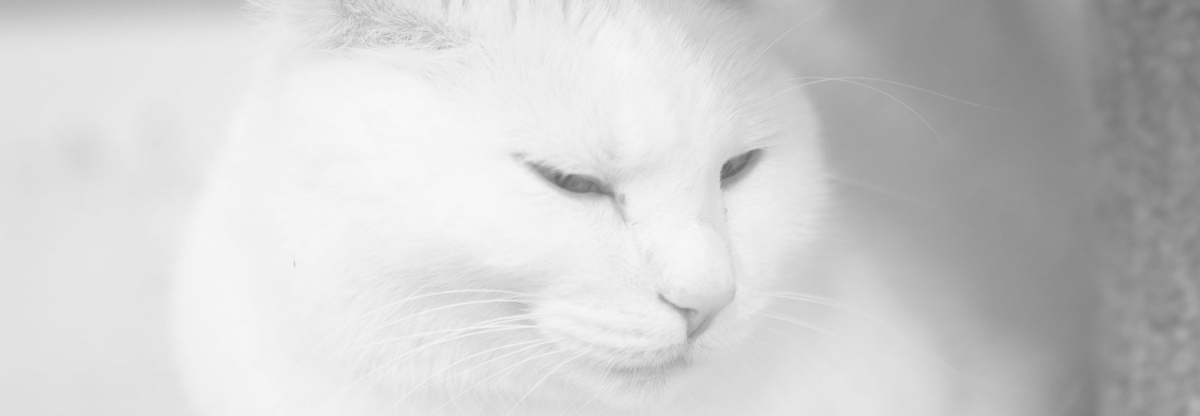Common Purebred Feline Disorders
Purebred cats must meet certain characteristics of the breed to prove their pedigree. Selective breeding for these traits has caused many breeds of cats to develop genetic health problems. Animal Wellness Center has experience working with purebred cats and knows which problems to look for based on breed.
Some breed characteristics can lead to health problems. All longhaired cats will require extra grooming from their owners to keep their fur from matting. Munchkin or dwarf cats can have mobility problems due to their size. Even if your cat is not 100% purebred, knowing their genetic history will be helpful in predicting possible health problems. If your cat is the cross between two purebred parents, they could be at greater risk for the inherited diseases of both breeds.
Cat Breeds with the Most Genetic Disorders:
Learn more about the health problems of the breeds from Animal Wellness Center.
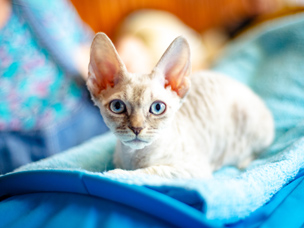
Rex (Cornish and Devon)
Distinctive Features:
Curly or wavy coat; narrow neck and large ears (Devon),
Common Health Problems:
Heart problems, kneecap dislocation; baldness and umbilical hernia (Cornish); hereditary myopathy (Devon)
Average Life Expectancy
9–15 years
Rex cats are specifically bred to have curly fur. This selective breeding has led to specific health issues, including Devon Rex spasticity (also called hereditary myopathy). This condition makes muscles weak and is eventually fatal.
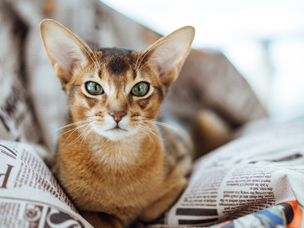
Abyssinian
Distinctive Features:
Bands of darker colored fur, smooth triangular head, large ears tilted forward
Common Health Problems:
Vision, hearing, and dental problems
Average Life Expectancy
9–15 years
Abyssinian cats have many problems due to a history of in-breeding. They can experience vision, hearing, and dental problems.
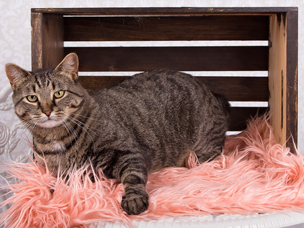
Manx
Distinctive Features:
Short tail or no tail
Common Health Problems:
Spinal defects
Average Life Expectancy
8–14 years
The Manx cat breed has a very distinct feature: a stub tail. Those with shorter tails may have spina bifida and spinal issues due to Manx Syndrome. They may also difficulty eliminating due to a larger than average colon.
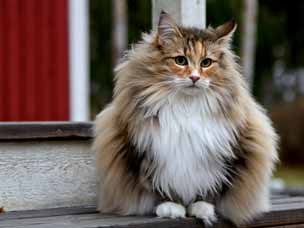
Norwegian Forest Ca
Distinctive Features:
Tufted ears, fluffy tail, long coat
Common Health Problems:
Heart problems, hip dysplasia, glycogen storage disease
Average Life Expectancy
14–16 years
Health problems sometimes seen in Norwegian forest cats include hypertrophic cardiomyopathy, hip dysplasia, and glycogen storage disease type IV. This rare disorder causes an enzyme deficiency where glycogen can’t be processed properly, causing altered glycogen to build up in muscles and nerves. The disease is fatal—some kittens die before or just after birth, while others may not show signs of the disease until they are 4 or 5 months old.
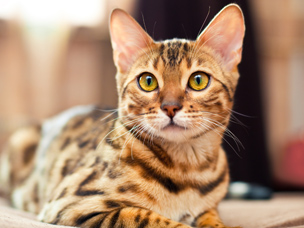
Bengal
Distinctive Features:
Spotted or marbled coat, large triangular head, thick neck and tail, large feet
Common Health Problems:
Heart conditions, eye diseases, and joint problems
Average Life Expectancy
12–16 years
Bengal cats sometimes suffer from heart disease and degenerative eye conditions like progressive retinal atrophy. Mild to severe knee dislocation and hip dysplasia is also seen in this breed; severe cases may lead to lameness or require surgery.
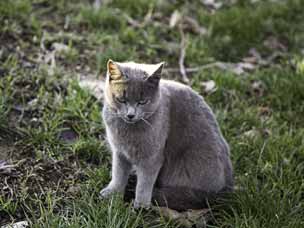
Burmese
Distinctive Features:
Compact but heavy body; rounded body, ears, eyes, chin, and feet; short glossy coat (usually sable)
Common Health Problems:
Cranial deformities, glaucoma, hyperesthesia, kidney stones
Average Life Expectancy
16–18 years
Burmese cats may suffer from feline hyperesthesia syndrome, causing sensitivity to touch or pain. They also have a tendency to develop kidney stones in the urinary tract.

Ragdoll
Distinctive Features:
Blue eyes, semi-long coat, floppy body
Common Health Problems:
Bladder stones, heart problems
Average Life Expectancy
12–17 years
Like many other types of cats, ragdolls can develop a heart condition called hypertrophic cardiomyopathy. They are also prone to bladder stones.

Siamese
Distinctive Features:
Short light coat with dark points, bright blue eyes, triangular head, tall ears
Common Health Problems:
Heart, respiratory, dental, and eye problems; certain types of cancer
Average Life Expectancy
15–20 years
While Siamese cats do not have many physical health problems, they are prone to neurological issues including a type of obsessive compulsive disorder.

Himalayan
Distinctive Features:
Flat face, long full coat
Common Health Problems:
Kidney problems, respiratory problems
Average Life Expectancy
15+ years
Himalayan cats’ flat faces can cause breathing problems and make them sensitive to heat. Himalayans may also have polycystic kidney disease (PKD), which can lead to kidney failure.

Maine Coon
Distinctive Features:
Heavy silky coat, large head, tall ears, long body and tail
Common Health Problems:
Hypertrophic cardiomyopathy, hip and elbow dysplasia, spinal muscular atrophy
Average Life Expectancy
12–15 years
These cats face problems due to their size, as some can easily reach 15-20 pounds in weight. This can lead to problems with hip and elbow dysplasia. They also have heart problems.

Persian
Distinctive Features:
Flowing glossy, coat, flat face, dipped nose
Common Health Problems:
Respiratory and digestive issues; kidney, vision, and heart problems; bladder stones and infections, liver shunts
Average Life Expectancy
15+ years
Persians require regular brushing and grooming to keep their fur clean. Their short face can cause many respiratory and digestive problems. It can be hard for them to breathe with a very short nose. Eating is also difficult if their jaw does not stick out far enough or if their teeth are misaligned.



